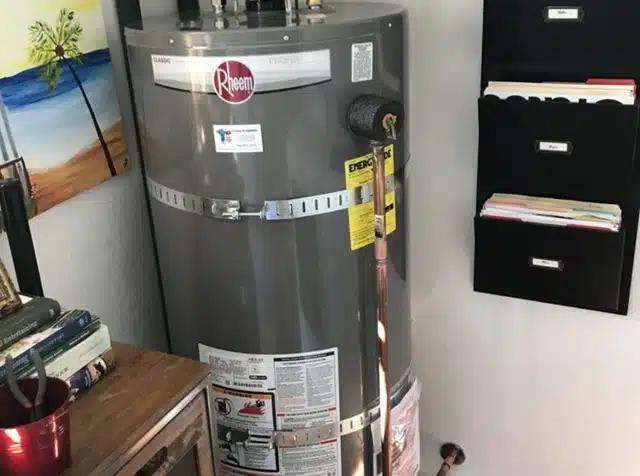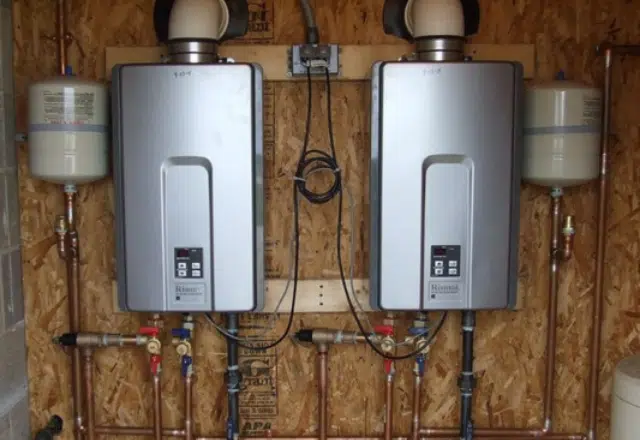Age of Water Heater:
Understanding Its Lifespan and Maintenance Needs
A water heater's lifespan typically ranges between 8 to 12 years, depending on various factors such as maintenance, usage, and the type of unit. Knowing the average age of a water heater is crucial for homeowners, as it helps them determine when to consider replacement. An aging appliance may lead to inefficient heating and increased energy bills.
Regular maintenance plays a significant role in maximizing the lifespan of a water heater. For instance, flushing the tank annually can prevent sediment buildup, which can damage the unit over time. Understanding the signs of wear and tear allows homeowners to make timely decisions about repairs or upgrades.
Being aware of these factors not only extends the life of a water heater but also ensures a steady supply of hot water when it is needed most. Keeping track of the age and condition of the unit can save both money and frustration in the long run.

Determining the Age of Your Water Heater
Finding out the age of a water heater can help homeowners assess its condition and plan for replacements. Key methods involve locating the serial number and interpreting the date code.
Locating the Serial Number
The first step in determining the age of a water heater is to find the serial number. This number is typically located on the manufacturer's label, which can be found on the side or the top of the tank.
For many brands, the serial number can be found beneath the insulation, on a metal plate, or even at the back of the unit.
When searching for the serial number, ensure the area is free of dust and debris for better visibility. This number is essential for decoding the age of the unit.
Deciphering the Date Code
Once the serial number is located, the next step is to decipher the date code. Many manufacturers use a standard format that includes the year and week of production.
For example, a serial number starting with "2023" indicates it was made in 2023. Codes can vary by manufacturer; some may use letters to represent years.
It is crucial to consult the specific manufacturer's guidelines for accurate interpretation. Online resources or customer service can provide further assistance in decoding. Understanding the age of the water heater allows for informed maintenance decisions.

Maintenance and Longevity
Proper maintenance of a water heater significantly enhances its longevity. Routine checks and servicing can prevent major issues and extend the life of the unit.
Regular Inspection
Regular inspection of the water heater is essential. Homeowners should check for signs of leaks, corrosion, or unusual noises. A visual inspection can reveal potential problems early, preventing costly repairs.
It is advisable to conduct these inspections every six months. Look for drips around the connections and ensure the temperature and pressure relief valve functions properly. Additionally, ensure that the heater is set at the recommended temperature, typically around 120°F (49°C). This reduces stress on the system.
Compile a checklist to monitor these aspects during inspection. Regular inspections can help identify and address minor issues before they escalate.
Anode Rod Replacement
The anode rod is vital for preventing tank corrosion. This rod attracts corrosive elements in the water, which protects the tank's interior lining.
It is recommended to inspect the anode rod every 1-2 years. If it appears significantly corroded or worn down, replacement is necessary. The rod is typically made from magnesium or aluminum, and replacing it can greatly extend the water heater's lifespan.
To replace the rod, shut off the water and power supply. Drain some water from the tank, then remove the existing anode rod and install a new one. Proper replacement of the anode rod is an investment in the water heater's longevity.
Sediment Flushing
Sediment buildup can reduce the efficiency of a water heater. Over time, minerals in the water settle at the bottom of the tank, leading to decreased heating efficiency and potential damage.
Flushing the tank is essential for maintaining optimal performance. It is advisable to perform a sediment flush annually. To do this, turn off the power supply and connect a hose to the drain valve at the bottom of the tank.
Open the valve while allowing cold water to flow in from the top. This process will stir up and remove accumulated sediment. Complete the flush by reconnecting the valve and refilling the tank with water. Regular sediment flushing can significantly improve heating efficiency and prolong the unit's life.
For expert assistance with your water heater maintenance, installation, or replacement needs, trust the professionals at 5-Star Plumbing. Our licensed technicians provide comprehensive water heater services with guaranteed workmanship and competitive pricing, ensuring your home's hot water system operates efficiently for years to come.
Published 3/25/25